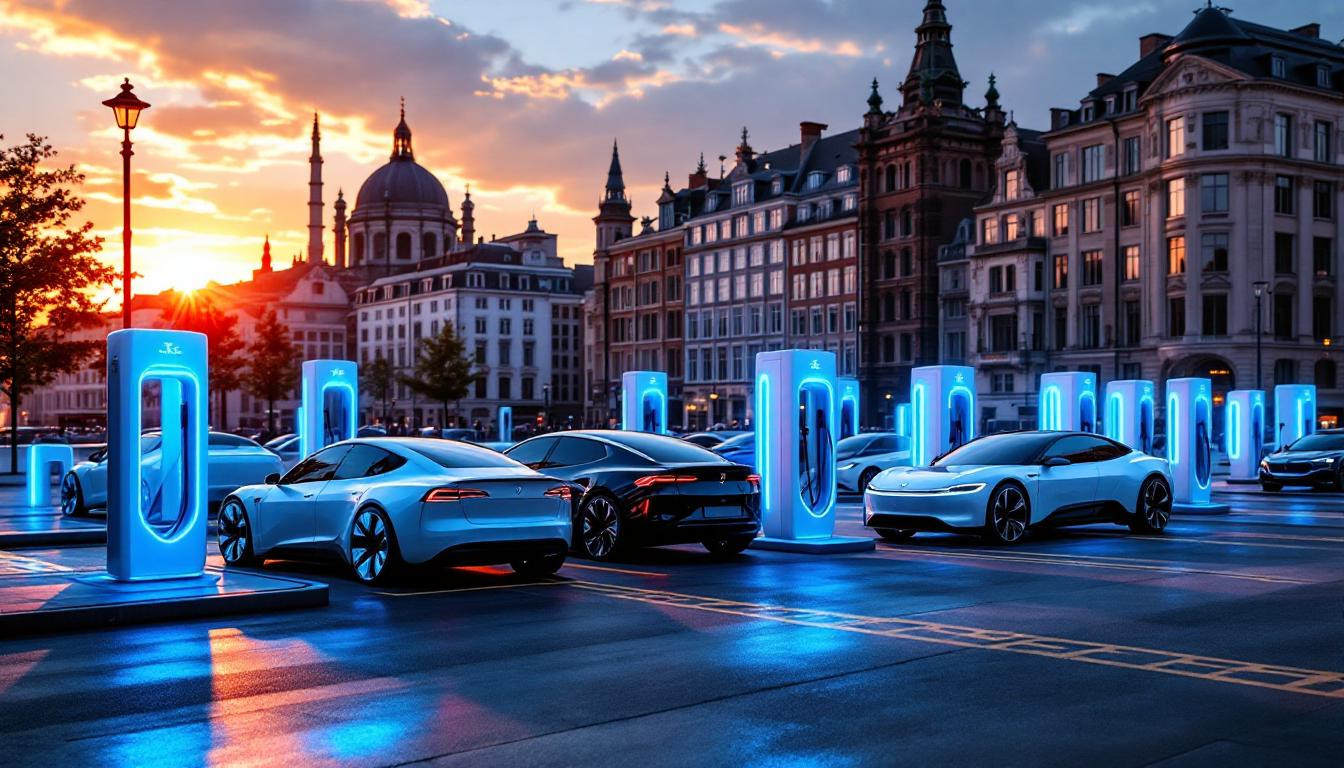As spring 2024 unfolds across Europe, a critical deadline looms on the automotive horizon. The EU’s plan to ban new petrol and diesel car sales by 2035 has sparked intense debate about Europe’s readiness for an all-electric future. With just over a decade remaining before this landmark transition, crucial questions about infrastructure, technology, and consumer sentiment deserve closer examination.
The 2035 petrol ban: What it really means
The European Union aims to eliminate CO2 emissions from new vehicles as part of its broader climate strategy toward carbon neutrality by 2050. Road transport currently accounts for approximately one-fifth of the EU’s total emissions, making this transition critical to meeting climate goals.
“We have to stick to the agreed targets, but we need to listen to voices who ask for more pragmatism and technological neutrality,” stated European Commission President Ursula von der Leyen, highlighting the delicate balance regulators must maintain.
Infrastructure challenges facing mass EV adoption
While electric vehicle sales continue climbing—now representing about 12.5% of new car purchases across Europe—charging infrastructure remains a significant hurdle. The EU plans to install over one million charging points by 2025, but regional disparities in deployment could create “charging deserts” in less developed areas.
Alex Keynes, Cars Policy Manager at Transport & Environment, warns: “Changing the 2035 target would mean tearing up the map that businesses have based their investments on. Instead, let’s support the transition with a green automotive plan.”
The e-fuels exception: A viable alternative?
Germany successfully negotiated an exception allowing combustion engine vehicles powered by carbon-neutral e-fuels to be sold after 2035. However, many experts question their practicality.
“Synthetic fuel will not play an important role in the medium-term future of passenger cars,” argues Markus Duesmann, CEO of Audi, pointing to efficiency concerns that could limit widespread adoption.
Economic implications for European automakers
The transition presents both challenges and opportunities for Europe’s automotive sector. While established manufacturers invest billions in EV development, competition from Chinese manufacturers offering affordable electric models intensifies pressure on profit margins.
Current market leaders include:
- Tesla Model 3 – Range: ~430km
- Volkswagen ID.4 – Range: ~520km
- Nissan Leaf – Range: ~270km
Are consumers ready to make the switch?
Despite growing interest in electric mobility, consumer concerns persist. A recent survey indicates about one-third of Europeans are prepared to switch to electric vehicles within five years, while others remain hesitant due to:
- Higher upfront purchase costs
- Range anxiety concerns
- Uncertainty about charging availability
- Questions about battery longevity
The micromobility alternative
Smaller electric vehicles and microcars may provide a transitional solution, particularly in urban environments where range requirements are lower and parking space is limited.
Transportation infrastructure transformation
The 2035 ban arrives alongside other significant transportation changes, including Britain’s railway overhaul planned for 2025. These parallel developments could create complementary sustainable mobility networks if properly coordinated.
Economic hedging against transition uncertainty
Some financial experts, like Warren Buffett, are maintaining significant cash reserves partially due to uncertainty around major transitions like electrification, suggesting caution about the economic impacts of such fundamental industry shifts.
Looking ahead: Is 2035 realistic?
Dominic Phinn, Head of Transport at Climate Group, emphasizes: “To pursue the business and industrial transformations needed to reduce emissions, CEOs and executives need regulatory stability.”
As with any long-term mission requiring sustained focus, Europe’s journey toward all-electric transportation demands both vision and practical adaptation. The 2035 deadline remains ambitious but achievable—provided governments, industry, and consumers align their efforts toward this transformative goal.
